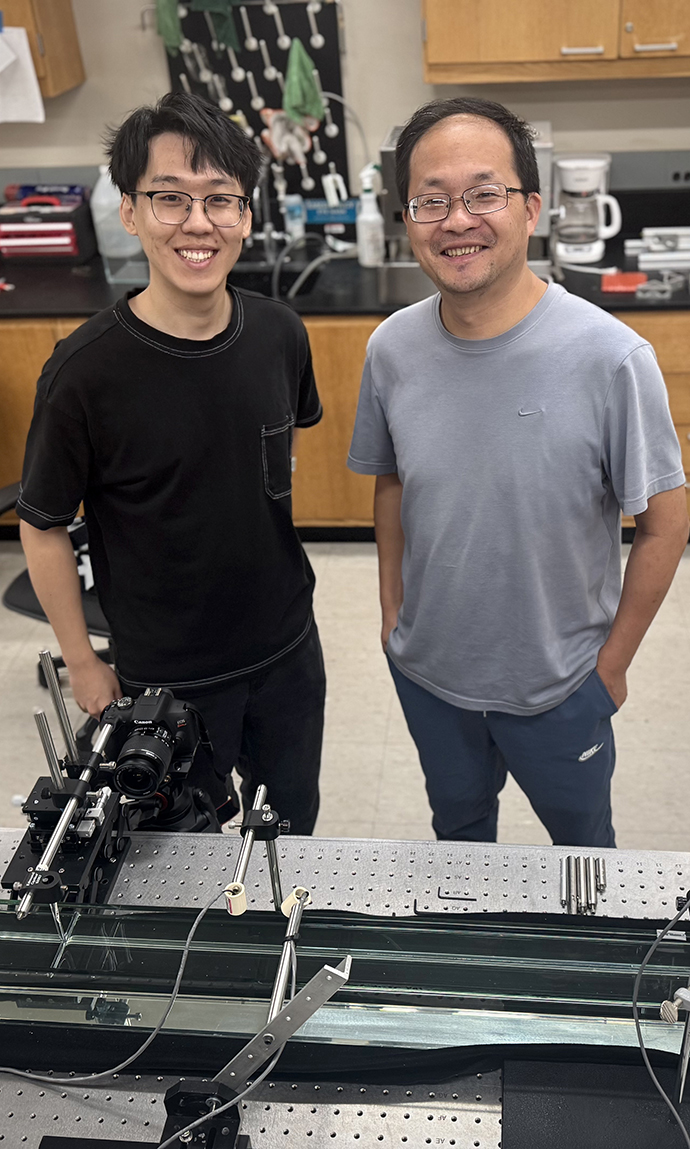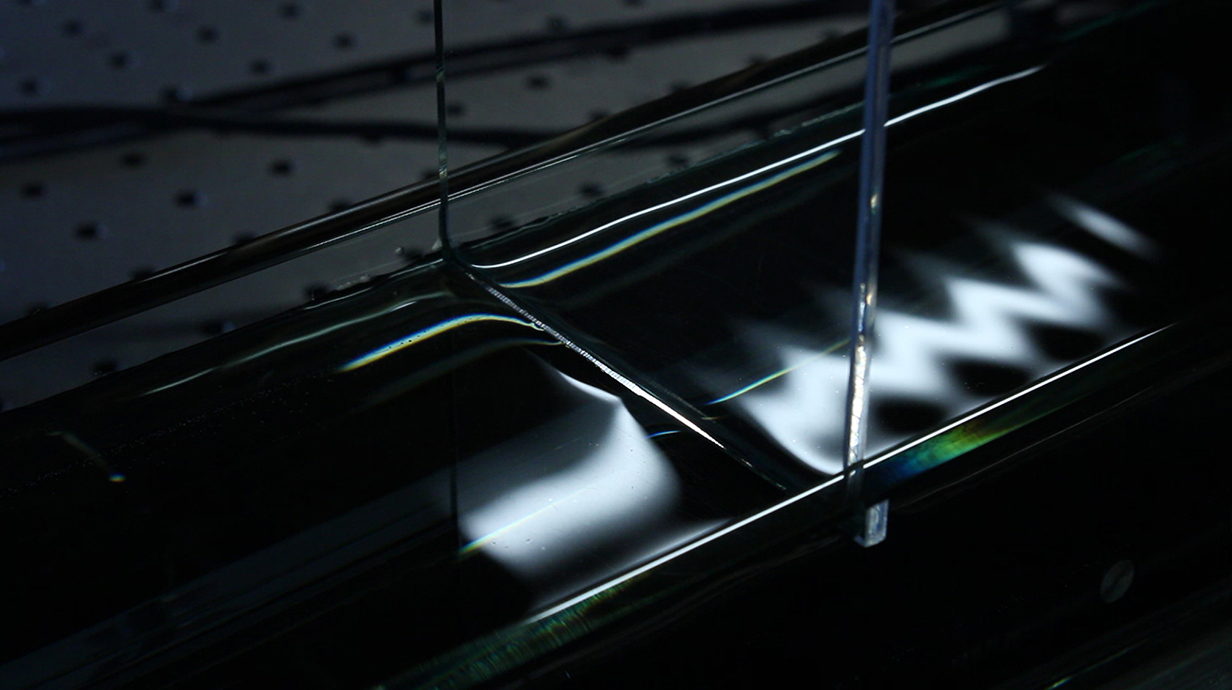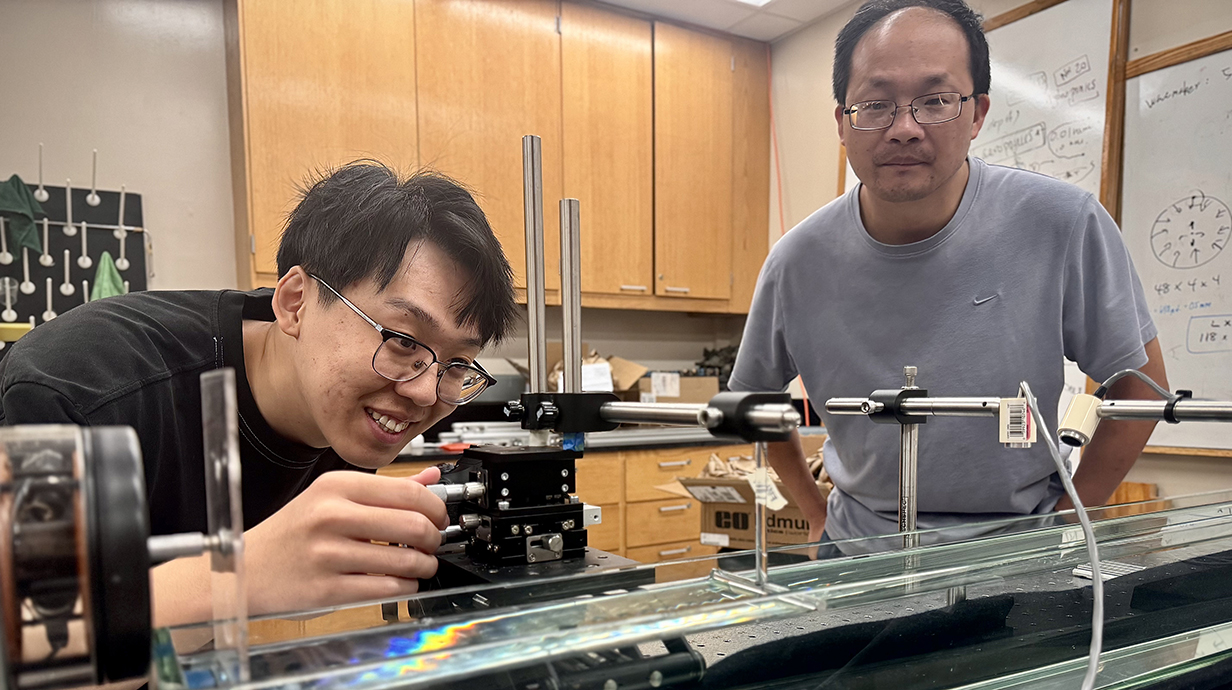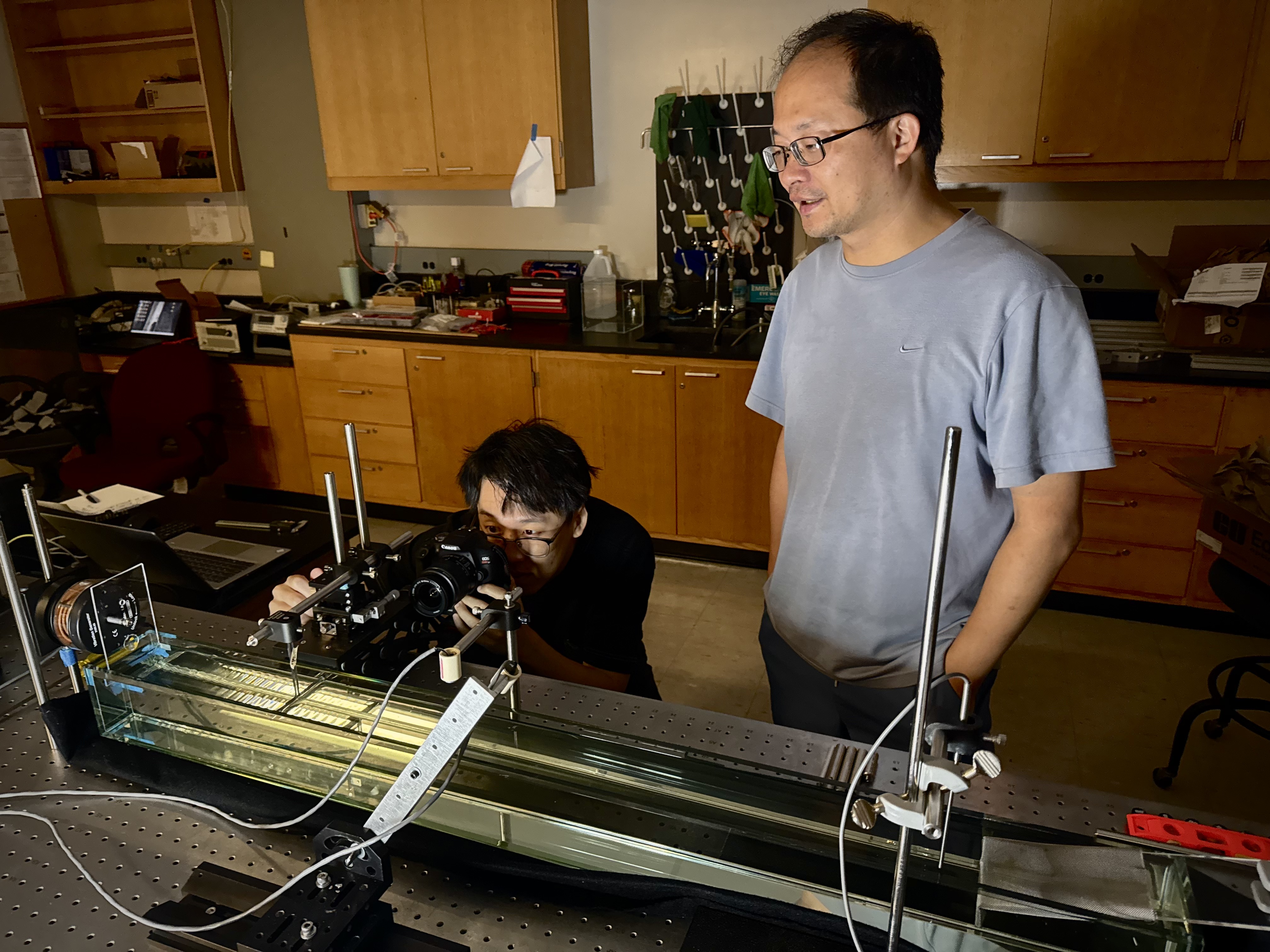Tiny Waves, Big Impact: Study Finds New Way to Control Fluid in Space
OXFORD, Miss. – Liquids can provide some especially tricky challenges for space travelers, but new research from the University of Mississippi could help engineer smarter, more efficient fluid control in zero- and low-gravity environments.

By changing the height of a partially submerged barrier in moving water, researchers Likun Zhang (right), senior scientist at the National Center for Physical Acoustics, and Zhengwu Wang, a doctoral student in physics, found that they can alter how much energy passes through that barrier. Photo by Clara Turnage/University Marketing and Communications
Likun Zhang, senior scientist at the National Center for Physical Acoustics and associate professor in the Department of Physics and Astronomy, led a research team studying how liquid waves move through barriers in low-gravity environments. Their results were published in Physical Review Letters.
"In low-gravity cases like the space station, surface tension dominates everything," said Zhengwu Wang, a fourth-year Ole Miss doctoral student in physics and co-author of the study. "The curvature of the water – the meniscus – is going to appear around structures, and we wanted to know how that meniscus would affect how waves move across barriers."
When water meets a partially submerged barrier – think of a leaf on a pond – the surface tension of the liquid causes the liquid to curve upward where it meets the barrier; in this case, the leaf. Zhang and Wang's research shows that this curve, called the meniscus, can be manipulated to reduce or increase the amount of energy that passes through that barrier.
“This is the first experiment studying this behavior in fluid, but it opens the door to new phenomena and new physics. This work is valuable because it shows a new way to control fluid for the first time.” – Likun Zhang
If the meniscus' curve is slight, more energy passes through. But as the meniscus curves more steeply, it reduces the energy conveyed by the fluid.

A wave travels through a tank in Likun Zhang's laboratory at the National Center for Physical Acoustics. Submitted photo
"Our common sense tells us a barrier should block waves, but here we found certain meniscus shapes can make waves pass through more easily," Zhang said. "Only a tiny, 1.5-millimeter change in the meniscus shape caused the transmission to drop from about 60% to just a few percent. Tiny meniscus, huge impact."
Space travelers use liquids for all manner of applications: from fuel and water-recycling systems to life support and cooling systems. Being able to better control the fluid in these systems can make them more efficient and lighter – a key for space travel.
"These are really tiny effects in daily life, but they can have a huge impact in microgravity environments," Wang said.
To conduct the experiment, the researchers simulated low gravity by generating small, frequent surface waves. Then, they placed a partial barrier in the path of those waves and used acoustics to measure the meniscus' movement.
By changing the barrier's height and using a surface coating to make it water-attracting or water-repelling, the researchers controlled the meniscus – and how much energy passed through the barrier.

Zhengwu Wang (left) a doctoral student studying physics, adjusts his camera to best capture the movement of water through a barrier in microgravity-like conditions. Wang and Likun Zhang, senior scientist at the National Center for Physical Acoustics, recently published research on manipulating the flow of water through barriers in Physical Review Letters. Photo by Clara Turnage/University Marketing and Communications
"As physicists, we are looking at very fundamental problems: the like problem of wave dynamics and barriers," Zhang said. "But being able to control fluid behavior in low gravity is crucial – whether you're talking about water recycling systems or fuel tanks – because you can't rely on gravity to separate liquids and gases."
The applications could prove useful in earthbound manufacturing and biomedical engineering, too, where microfluidic devices move fluids through channels just millimeters wide, Zhang said. These devices range from printers to DNA chips to lab-on-a-chip technology.
"This is the first experiment studying this behavior in fluid, but it opens the door to new phenomena and new physics," he said. "This work is valuable because it shows a new way to control fluid for the first time."
This material is based on work supported by the National Science Foundation grant no. 2306106.




